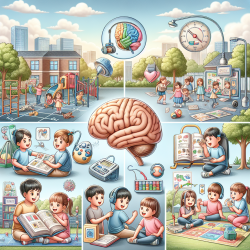Introduction
In the realm of home care services, understanding the factors that drive healthcare service utilization is crucial for creating effective care strategies. The research article, "Which need characteristics influence healthcare service utilization in home care arrangements in Germany?" provides valuable insights into these factors. By leveraging the findings from this study, practitioners can enhance their skills and improve outcomes for care recipients and their families.
Key Findings from the Research
The study utilized the Andersen Behavioral Model of Health Services Use to explore how need characteristics influence service utilization in home care settings. Key findings include:
- Nursing services and counseling are the most utilized services, while short-term care and guidance have high potential for future use.
- Women and older adults are more likely to utilize services, indicating a demographic trend in service usage.
- Emotional distress and the health of the primary caregiver significantly impact service utilization.
- Long waiting times for support increase the likelihood of service integration.
Implications for Practitioners
Practitioners can leverage these findings to tailor their approach to home care services. Here are some actionable steps:
- Family-Centric Approach: Recognize the significant role of family caregivers in service utilization. Engage the entire family in care planning to address their specific needs and reduce emotional strain.
- Targeted Interventions: Develop targeted interventions for women and older adults, who are more likely to use services. This could include personalized counseling and support programs.
- Address Emotional Distress: Implement strategies to alleviate emotional distress among caregivers and care recipients. This could involve offering psychological support and stress management resources.
- Reduce Waiting Times: Work on improving service delivery efficiency to minimize waiting times for support, thereby increasing service uptake.
Encouraging Further Research
While this study provides valuable insights, further research is needed to explore the barriers leading to high rejection rates of certain services. Understanding these barriers can help in designing services that better meet the needs of care dependents and their families.
Conclusion
By applying the insights from this research, practitioners can enhance their skills and improve the quality of home care services. A family-centric approach, targeted interventions, and strategies to address emotional distress are key to increasing service utilization and improving outcomes for care recipients.
To read the original research paper, please follow this link: Which need characteristics influence healthcare service utilization in home care arrangements in Germany?










